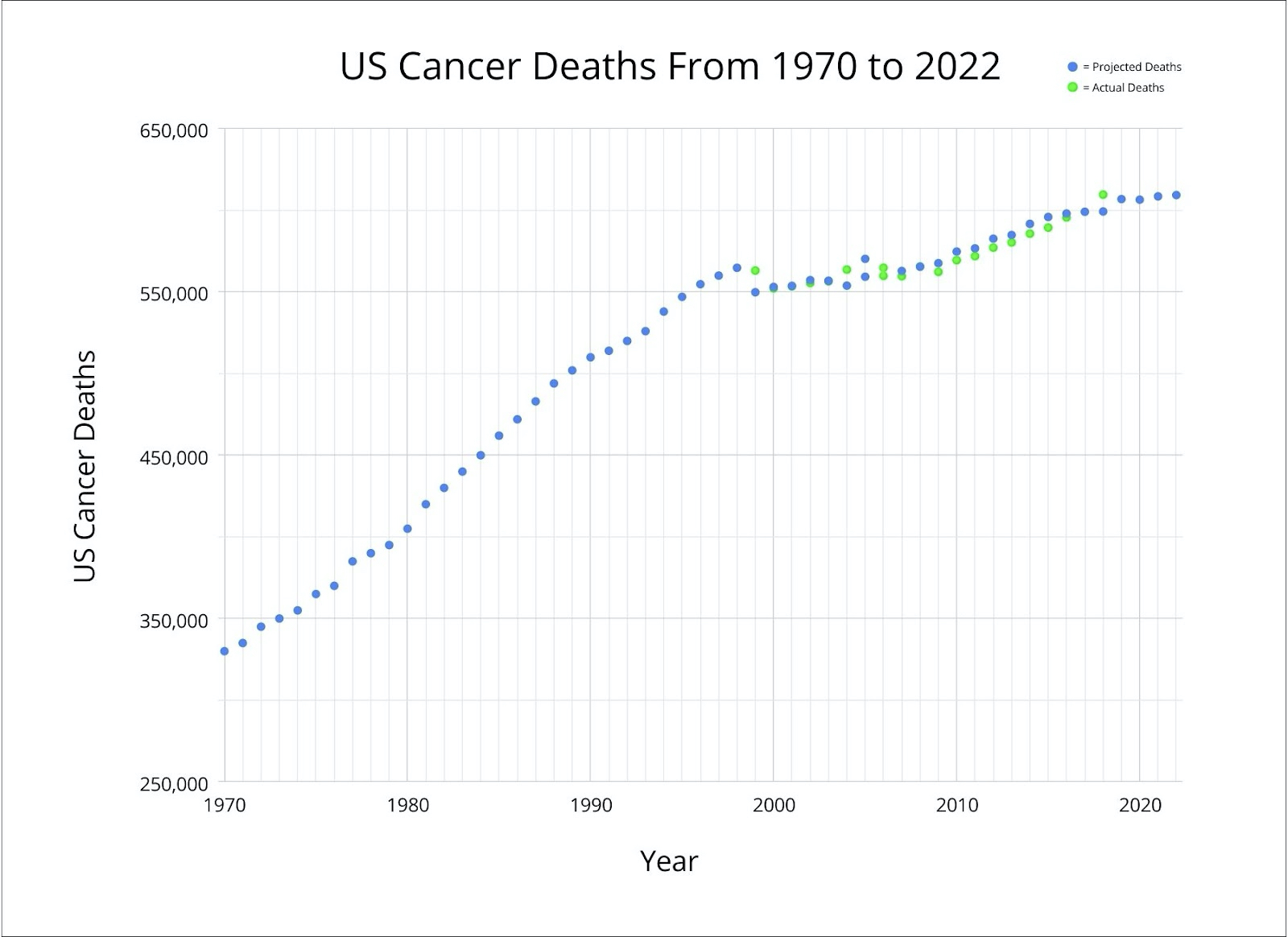Strategic plan to substantially reduce cancer deaths - discussion #2
Choosing a target for success
This is our second essay to discuss details of our strategic plan to substantially reduce cancer deaths at www.pathologyoutlines.com/ccnstrategicplan.html.
What should our target be for success? I have proposed that we attempt to reduce annual U.S. cancer deaths from the current level of 600,000 deaths per year to 100,000 per year.
I chose this target for several reasons:
First, this target represents an 83% reduction in annual deaths, which is comparable to the reduction in cancer deaths in U.S. children and adolescents over the past several decades. Previously, the cancer types listed in the table below were fatal within a short time; now, their 5 year survival rates average 85-86%. Thus, this level of death reduction seems to be a reasonable target for cancer in adults.
| 5-year relative survival, 2011-2017 | Ages 0-14 | Ages 15-19 |
| Overall cancer in these groups | 85% | 86% |
| Hodgkin lymphoma | 99% | 97% |
| Non Hodgkin lymphoma | 91% | 88% |
| Leukemia | 87% | 75% |
| Brain and other nervous system | 74% | 76% |
| Bone and joint cancer | 68-76% | 59-68% (varies by subtype) |
Reference: American Cancer Society, 5 year relative survival for childhood (ages 10-14) and adolescent (ages 15-17) cancer, 2011-2017, retrieved 16Dec22
Second, after 50 years of fighting the War on Cancer (NCI: National Cancer Act of 1971, accessed 16Dec22), I believe we need to "dare greatly" (The Man in the Arena 1910, retrieved 16Dec22) and to determine our desired cancer related goals (Pernick: Let's cure cancer together 2021), even if they are ambitious and we do not know precisely how to achieve them. The purpose of this strategic plan is to think about what needs to be done and to motivate us to figure out how to do it. It should be a challenge - it should not be designed to praise ourselves for doing something that we already know how to do.
Third, proposing a goal of a very small number of cancer deaths is, regrettably, not sensible. As noted for the above "curable" childhood cancers, 5 year survival rates are not that close to 100%. Some patients will still die from cancer due to treatment noncompliance, medical conditions that interfere with treatment, treatment error, treatment failure for unknown reasons and the development of additional cancers.
Finally, we should be honest about what we can and cannot do. We cannot achieve "a world without cancer" (American Cancer Society Mission Statement as of 23Sep22, now revised). Cancer will always be with us because (a) multicellular organisms are based on self-organized critical states with a predictable risk of catastrophic system failure in the form of cancer (Pernick: The Laws of Complexity and Self-organization: A Framework for Understanding Neoplasia 2017); (b) we can reduce but cannot eliminate personal behavior that promotes cancer, such as tobacco use and being overweight (Pernick: Curing Cancer Blog - What should our national cancer goals be 2021); and (c) we cannot eliminate random chronic stress, a major contributor to lung, pancreatic and other cancers (Pernick: Curing cancer - Random chronic stress / bad luck as a major cause of cancer 2022). Thus, we have to accept that cancer will continue, although we can prevent many cases, detect it earlier and treat it more effectively.
